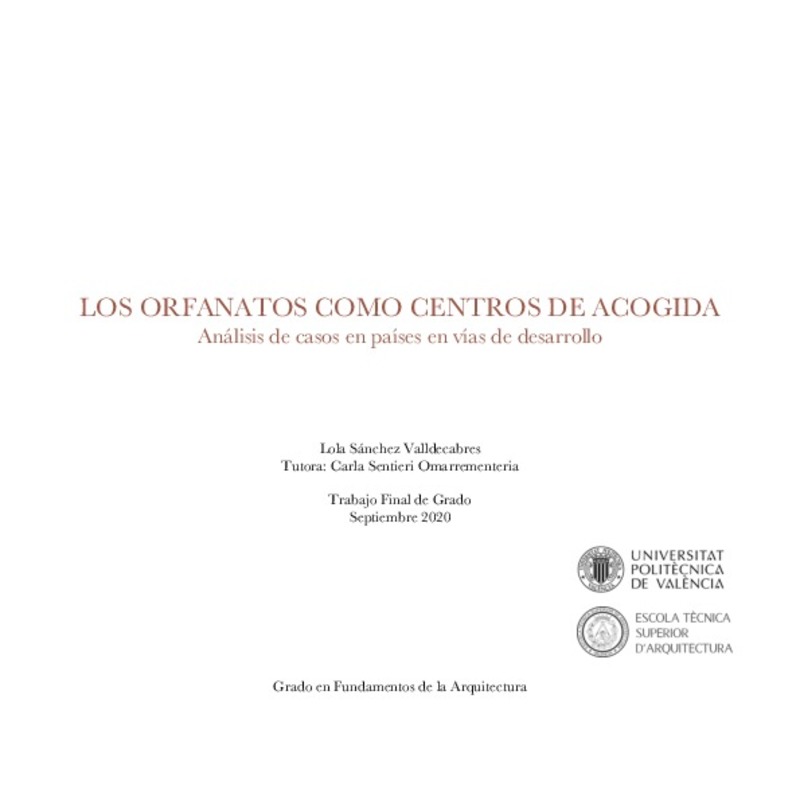JavaScript is disabled for your browser. Some features of this site may not work without it.
Buscar en RiuNet
Listar
Mi cuenta
Estadísticas
Ayuda RiuNet
Admin. UPV
Los orfanatos como centros de acogida. Análisis de casos en países en vías de desarrollo.
Mostrar el registro completo del ítem
Sánchez Valldecabres, L. (2020). Los orfanatos como centros de acogida. Análisis de casos en países en vías de desarrollo. Universitat Politècnica de València. http://hdl.handle.net/10251/169099
Por favor, use este identificador para citar o enlazar este ítem: http://hdl.handle.net/10251/169099
Ficheros en el ítem
Metadatos del ítem
| Título: | Los orfanatos como centros de acogida. Análisis de casos en países en vías de desarrollo. | |||
| Autor: | Sánchez Valldecabres, Lola | |||
| Director(es): | ||||
| Fecha acto/lectura: |
|
|||
| Resumen: |
[ES] El objetivo principal de este trabajo es mostrar la capacidad de la arquitectura para influir en el modo de vida de determinados grupos, en concreto, del colectivo infantil. Para ello, se describe la evolución histórica ...[+]
[EN] The main objective of this work is to show the capacity of architecture to influence the lifestyle of certain groups of people, specifically, children. For this purpose, it describes the historical evolution of the ...[+]
|
|||
| Palabras clave: |
|
|||
| Derechos de uso: | Reserva de todos los derechos | |||
| Editorial: |
|
|||
| Titulación: |
|
|||
| Tipo: |
|
recommendations
Este ítem aparece en la(s) siguiente(s) colección(ones)
-
ETSA - Trabajos académicos [4687]
Escuela Técnica Superior de Arquitectura







